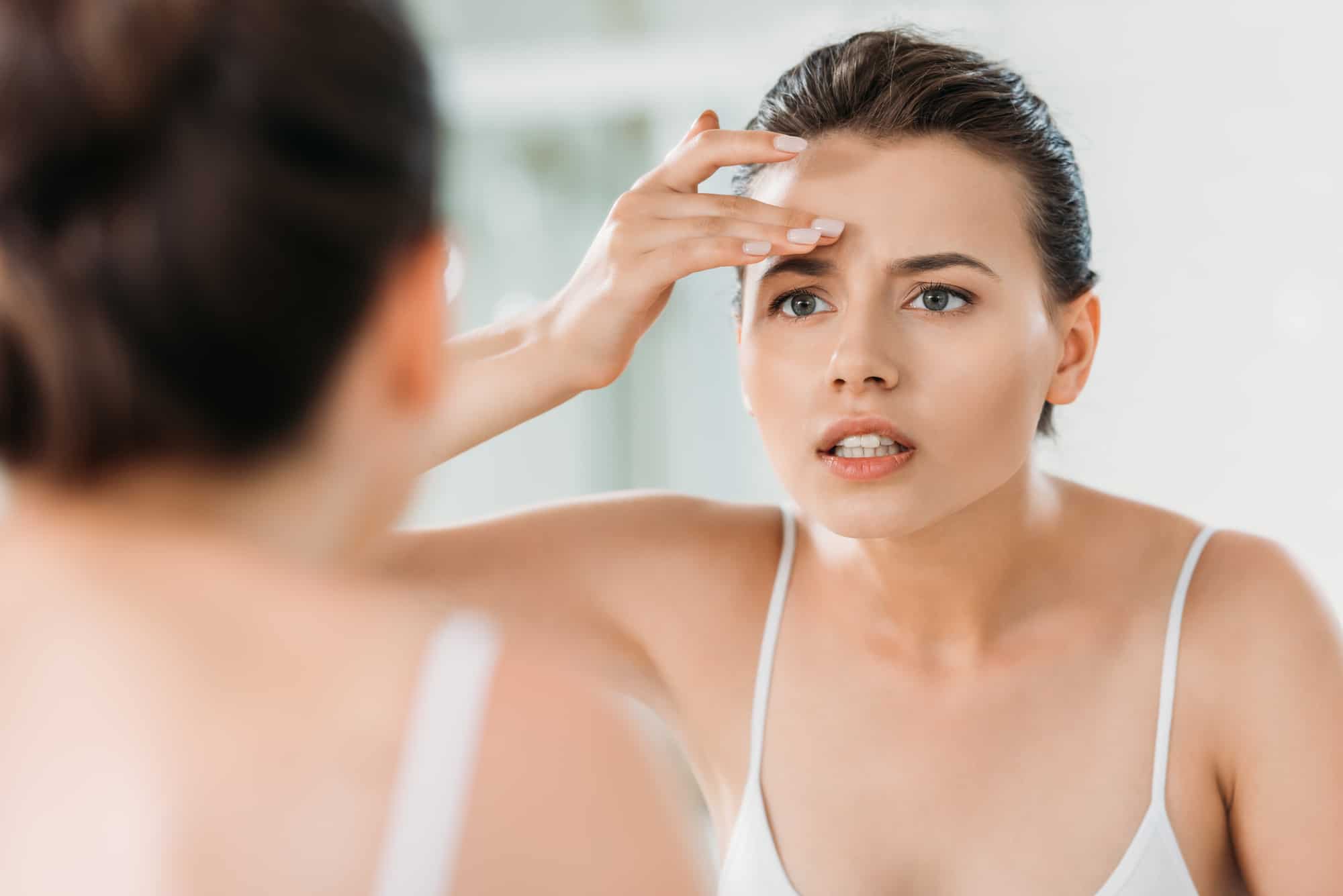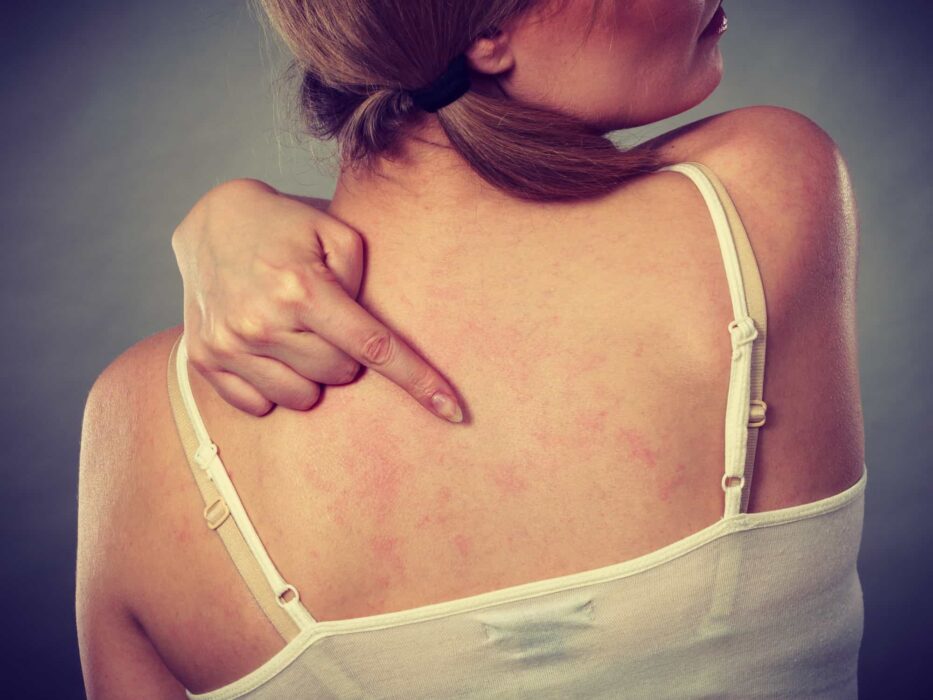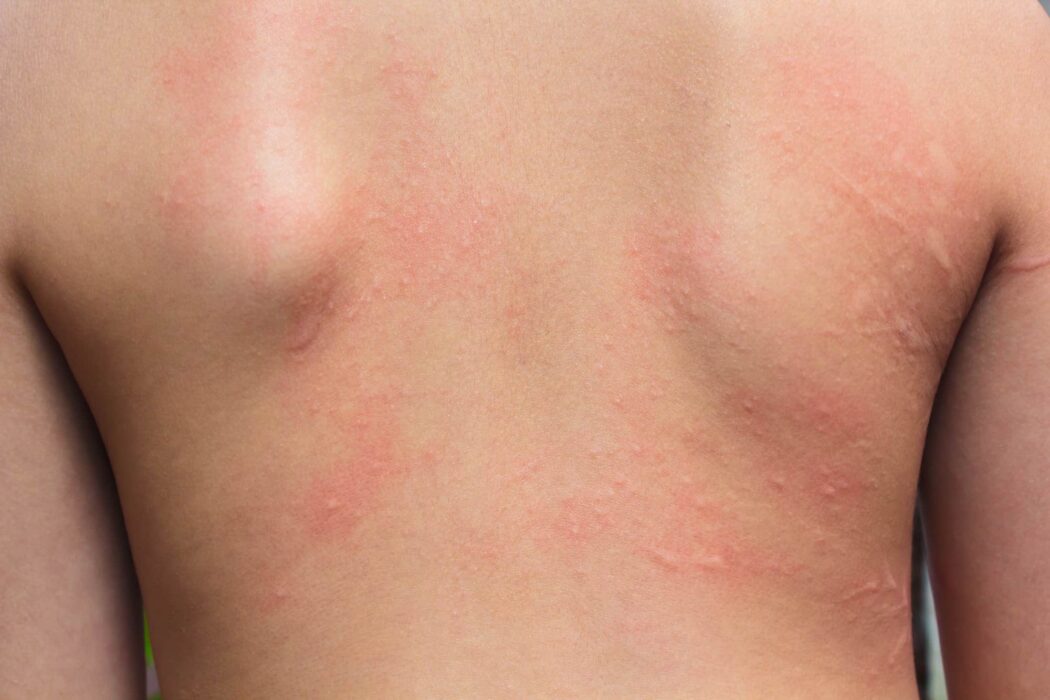The keto diet is a type of low-carb nutrition that includes up to 80% fat in your daily menu. And more often, this diet has no side effects on your health and improves your overall well-being. However, occasionally, people get unpleasant rashes and itching while on a high-fat diet. What is keto rash, and what are its causes?
Keto rash is an itchy rash that occurs when some people enter ketosis while starting a keto diet. The keto rash does not occur in all people starting the ketogenic diet. It is rather an exception. A keto rash appears due to the reaction of the skin’s nerve endings to the excess acetone released with sweat, which is formed during the metabolism of ketone bodies.

If you are worried about a possible keto rash while starting a ketogenic diet, there are easy ways to avoid it. In this article, you will find out all the details regarding this skin problem. Where does the keto rash come from? How can you avoid it? How to get rid of keto rash without stopping the keto diet? Keep reading to find out more about keto and skin issues!
What is Keto Rash?
Keto rash is a form of Prurigo Pigmentosa, an inflammation of the skin that causes redness, itching, and rashes in the upper part of the body. What does keto rash look like? The keto itch most often appears on the chest, abdomen, back, and sometimes on the neck. This kind of rash is usually symmetrical and often appears within days or weeks after starting the keto diet. The rash looks similar to eczema or contact dermatitis, but it has a unique net-like pattern and appears unnoticed.
Mudras for Skin That Make You Glow from Inside
Most often, people notice the appearance of light pink bumps, which turn into papules or groups of small red spots after a few days. Some of them may even be filled with fluid or pus. After a few more days, the rash will turn brown and crust over. It is the healing phase, during which the rash begins to diminish and soon disappears.
Although the keto rash usually occurs on the front and back of the torso, in some cases, it spreads to the upper thighs. Very rarely, it affects the forehead or limbs. The rash itself is not dangerous, although it causes very unpleasant sensations.

Why Does Keto Rash Occur?
What causes keto rash? To date, there are not many studies of keto itching, but a link between starting a diet and the onset of skin inflammation is possible [1]. Also, keto itchy skin can be associated with nutritional and hormonal deficiencies [2].
However, the general theory is that the keto rash is triggered by ketone bodies secreted through the skin’s pores. The reason is that ketone bodies are hydrophilic. It means that they dissolve in water and circulate through the body with the bloodstream, being released with sweat onto the skin from the interstitial fluid. Thus, the smell of acetone from the mouth and the body appears.
Acetone is a metabolic product produced during the formation of ketone bodies when the body is changing to receive energy not from carbohydrates but from fats. It has some toxicity and irritates skin receptors. Carbohydrates are the main energy source for a modern person, and a complete rejection of them leads to a loss of strength and fluid.
For the body to learn to get energy from fat, an alternative source, it takes some time, called keto-adaptation. During the sharp rejection of carbs, the body loses all the water previously held by carbohydrates with acetone dissolved in it. It goes out through the pores.
The keto diet increases sebum production, which contributes to acne. Therefore, if you have any skin diseases, then they can worsen. Eating fatty dairy foods can also cause keto rashes, as they contain whey protein, provoking skin inflammation.
Possible causes of a keto rash:
- Ketone bodies that produce excess acetone, provoking inflammation of blood vessels and nerve endings;
- Complete rejection of carbohydrates;
- Absolute fasting to quickly enter a state of ketosis;
- An allergic reaction to certain highly allergenic foods, such as dairy foods, eggs, or nuts;
- Intoxication of the body with the formation of histamines – allergy mediators.
This type of rash occurs not only on a keto diet but also during prolonged fasting. It can also be a symptom of diabetes mellitus, H. pylori infection, Still’s Disease, Sjögren’s syndrome, and liver disease. In these cases, the skin also turns red and itchy. You can try the Still’s Disease diet to help your body feel better.

How to Prevent Keto Rash?
The best way to treat keto rash is to prevent it from happening right from the start. It can be achieved by entering the ketogenic diet smoothly. For example, if your current diet includes a ton of carbs, try cutting out one food at a time, like bread. First, try gluten-free bread for a few weeks. Then, stop eating starchy vegetables, lentils, legumes, and whole grains.
The Ultimate Guide to Keto Diet: Foods to Eat and to Avoid
Make sure you cut out one food group at a time to help your body adjust to a low-carb diet. Also, include healthy fats in your diet to help your body prepare for change. Once you finally enter ketosis, your body should be well prepared.
It is also helpful to track the symptoms of a skin rash. If you notice that your skin is dry and itchy after you first enter ketosis, then stop it and consume more carbs until the itching and dryness disappear. Drinking plenty of water can help cleanse the body of toxins that can cause rashes. It is also important to keep the areas where rashes usually appear dry and clean. You should also eliminate any skin irritants from your daily hygiene routine.
Take a look at keto rash pictures to identify it at the beginning if you feel itchy. You should also try natural body care products and include more anti-inflammatory foods in your diet to prevent rashes before you start the keto diet.
How to Get Rid of Keto Rash?
I hope that you can avoid itchy skin while starting your keto journey. But if you experience it, the best thing you can do is shorten the duration of the rash and alleviate the symptoms with some helpful tips. So, what is the keto rash treatment?
Let It Run Naturally
When you first discover you have a keto itch, it’s best to do nothing. No, I’m not joking. Sometimes it is best to let the rash develop quickly, and then it will simply disappear without a trace. However, if the rash does not go away on its own or progresses within two weeks or so, you can try natural ways to change it.
Add Some Carbs
A keto diet rash can be caused by low-carb diets, fasting, and excessive ketone production. For this reason, you should add small amounts of carbohydrates into your diet to see if symptoms can be relieved.
Try eating more non-starchy vegetables like kale and spinach as they contain healthy nutrients such as antioxidants that can help alleviate your symptoms naturally. You should balance your carbohydrate intake to make sure you are not forcing your body out of ketosis.
If you don’t notice a change in your rash after increasing your carbohydrate intake for several days, try adding them further so that ketosis stops for a few days. But it doesn’t mean eating processed foods, donuts, or pizza. Add some fruits, berries, and more vegetables to your nutrition.
This should give your skin enough time to heal. You can then return to ketosis and continue with your diet. However, if the rash comes back, it probably means that you are sensitive to ketones and need to find your perfect amount regarding how many carbs your body can handle.
Stop Fasting or Change It
As I have mentioned above, the keto rash may also be caused by fasting, so you should give up your intermittent fasting plan until the rash is gone. You can also try changing the intervals and, for example, try 10:14 instead of 8:16. By adjusting the fasting time, you can find the most comfortable period that will help you avoid skin problems.

Try Allergen-Free Diet
A food reaction can cause some rashes, so you can try a hypoallergenic diet to identify food allergens causing the problem. For example, some people are intolerant of dairy foods, eggs, fish, shellfish, tree nuts, or peanuts.
Try an allergen-free diet for two weeks and eliminate these foods from your nutrition. If the rash disappears, you can be sure that the reason is one of these foods contributing to its appearance.
Then gradually add these foods one at a time back to your diet and track the changes. Do not add more than one allergic food per week to your nutrition. It should be enough to determine which one is causing the problem.
Take Nutritional Supplements
The ketogenic diet can be extremely restrictive. It means that you may be nutritionally deficient if you do not follow a specific meal plan. Check out our keto supplement guide if you’d like to learn more about what supplements to choose during keto.
Since some symptoms of itchy skin on the keto diet appear due to a lack of certain vitamins and minerals, you may try adding complex vitamins to your diet. Find a combination of ingredients sourced from various whole fruits and vegetables rather than synthetic, artificial ingredients.
Using probiotics may also be beneficial for improving your immune system and preventing the worsening of the rash. Probiotics can help treat skin conditions by reducing inflammation and strengthening the immune system.
Reduce Stress Levels
I know it is easier said than done. Most people cannot completely avoid stress, but you can control your reactions to it. And, believe it or not, you can get a rash from emotional or physical stress.
To avoid stress literally on your skin, you need to find other ways to release it. However, you should keep in mind that excessive sweating is known to worsen rashes, so you should avoid heavy training for now. Instead, try some breathing exercises or yoga to relieve stress.
When you exercise, wear loose-fitting clothing that won’t irritate the rash, and make sure the clothing is moisture-wicking. In addition, try a warm essential oil bath, and remember to moisturize your skin regularly.

Conclusion
While each case of a rash from low-carb diet is different, most people find it to last for several days. It usually appears when you first put your body into ketosis. However, the rash has been known to last longer in some people than in others. In other words, it can last for weeks or months, or even years.
You can increase your carbohydrate intake slightly until the keto rash disappears. Then, try natural body care products free of chemicals, to avoid stress and excessive sweating. Finally, you can include anti-inflammatory supplements and foods in your diet to see if the rash will go away on its own. If not, then you need to see a doctor for a specific treatment.
Most people find that the rash goes away when their body gets used to ketosis. Either way, these simple guidelines can help you avoid or get rid of a keto rash if it does appear. However, keep in mind that there is no guarantee that you will develop a keto rash, as ketosis affects all people in different ways.
Sources:
- J. Michaels, Elika Hoss, D. DiCaudo and Harper N. Price. Prurigo Pigmentosa after a Strict Ketogenic Diet. Pediatric Dermatology v. 32 (2015). (https://doi.org/10.1111/pde.12275)
- N. Almaani, A. H. Al-Tarawneh, and H. Msallam. Prurigo Pigmentosa: A Clinicopathological Report of Three Middle Eastern Patients. Case Reports in Dermatological Medicine (2018). (https://doi.org/10.1155/2018/9406797)